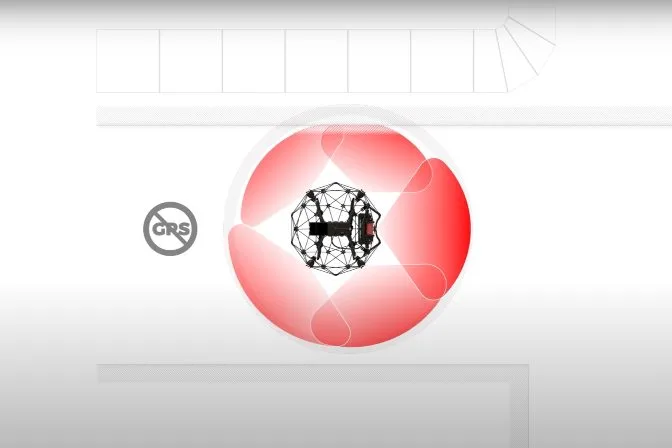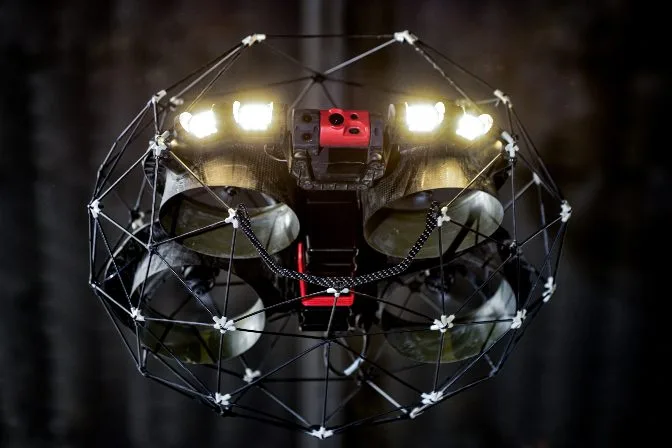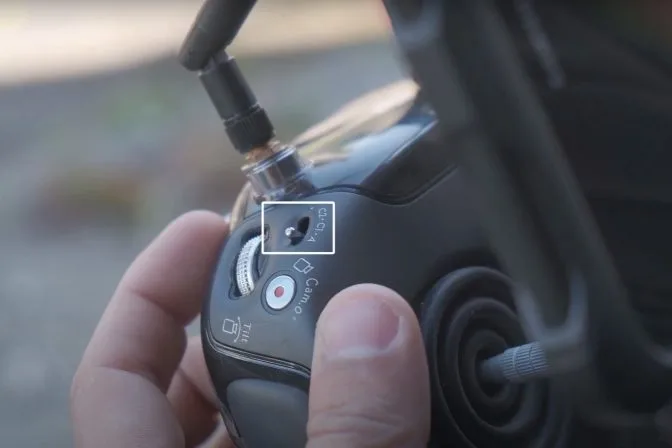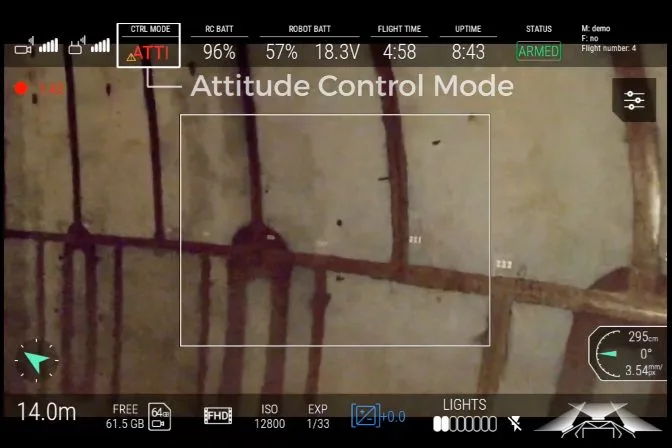ATTI Mode: A Guide
ATTI Mode: A Comprehensive Guide
ATTI mode, short for Attitude Mode, is the most hands-on and manual way to fly a drone. Unlike automated flight modes that rely on GPS or optical sensors, ATTI mode gives the pilot full control over the drone's orientation and movement. This mode is ideal for situations where external positioning systems are unavailable or unreliable.
As drone technology has advanced, there's been a growing trend toward automation, making flying drones easier than ever before. Features like GPS, obstacle avoidance, and intelligent flight modes have reduced the workload on pilots. However, in certain scenarios, ATTI mode remains essential for precise control and operation.
One of the most common applications for ATTI mode is in indoor environments where GPS signals are weak or non-existent. For example, when conducting inspections in tunnels, sewers, or industrial facilities, relying on GPS is not an option. In such cases, ATTI mode allows the pilot to maneuver the drone manually without the need for satellite-based navigation.
In ATTI mode, the drone’s optical sensors are disabled, and it relies solely on its internal gyroscopes and barometer to maintain stability. While this offers more freedom, it also requires a higher level of skill from the pilot. If you notice instability or erratic behavior due to sensor limitations, switching to ATTI mode might be necessary.

No GPS zone
What Is ATTI Mode?
ATTI mode is a flight setting that disables all automated features such as GPS and optical sensors. In this mode, the drone does not attempt to hold position or stabilize itself automatically. Instead, the pilot must manually control every aspect of the drone’s movement, including pitch, roll, yaw, and altitude.
This mode is typically used by experienced pilots who understand the challenges of flying without assistance. While it can be difficult to master, it offers a deeper understanding of how a drone functions and improves overall piloting skills. It’s also crucial in environments where GPS and vision systems cannot operate effectively.
[Related read: What Is a GPS-Denied Drone?]
When to Use ATTI Mode
Although ATTI mode is less common in consumer drones today, it still plays a vital role in specific industries. Many modern drones are designed with GPS and vision systems as their primary tools, but in areas where these systems fail, ATTI becomes the only viable option.
Indoor operations, such as inspecting pipelines, power plants, or underground structures, often require ATTI mode. These environments lack GPS coverage, and the presence of obstacles or reflective surfaces can interfere with optical sensors. In such cases, ATTI mode provides the flexibility needed to navigate complex spaces safely.
The mining industry, for instance, has long relied on ATTI mode for drone operations in deep shafts and confined areas. Drones like the Elios 3 are specifically built for GPS-denied environments and use ATTI mode to perform critical inspections where no satellite signal is available.
[Related read: Why We Made The Elios 3]
 The Elios 3
The Elios 3
Common Use Cases for ATTI Mode
ATTI mode is particularly useful when GPS signals are weak, blocked, or completely absent. Here are some of the most common scenarios where it comes into play:
-
Indoor inspections. Drones are used to inspect boilers, sewers, tanks, and mines—areas where GPS is out of range.
-
Bridge inspections. Large metal structures can interfere with GPS signals, making ATTI mode a safer choice.
-
Building inspections. Concrete and steel walls can block GPS signals, so ATTI is often used for accurate indoor mapping.
-
Critical infrastructure. Sensitive locations like military bases may restrict GPS usage, requiring ATTI for safe operations.
The Elios 3, for example, is optimized for demanding environments where precision and reliability are essential. Its design allows it to operate efficiently in GPS-denied conditions using ATTI mode.
How Does ATTI Work?
When in ATTI mode, the drone removes all automated stabilization and positioning features. This means the pilot must handle everything manually, from maintaining altitude to controlling direction. The drone uses an onboard barometer to measure air pressure and help keep it level, but it won’t compensate for wind drift or other environmental factors.
What Conditions Can Trigger ATTI Mode Automatically?
- Flying over highly reflective or monochromatic surfaces
- Operating a drone with dirty vision sensors
- Flying near concrete or large metal structures
- Using high-speed flight modes, which can cause signal loss
Benefits of Flying in ATTI Mode
While ATTI mode can be challenging, it offers several advantages that make it valuable for experienced pilots.
1. Helps You Prepare—and Be Ready—for the Unexpected
Knowing how to fly in ATTI mode prepares you for situations where GPS or vision systems fail. It builds your confidence and ability to handle unpredictable conditions, which is essential in professional drone operations.
2. It’s Optimized for Flying Indoors
Indoor flights come with unique challenges, like limited space and signal interference. ATTI mode eliminates reliance on GPS, allowing you to focus on manual control and spatial awareness. This makes it ideal for navigating tight or complex environments.
3. You’ll Get Smooth Footage
Some pilots prefer ATTI mode for video work because it avoids automatic corrections that can cause jittery footage. When done correctly, ATTI can result in smoother, more cinematic shots—but it takes practice to master.
ATTI Mode Flying Tips
Flying in ATTI mode is not something you learn overnight. It requires patience, practice, and a good understanding of drone mechanics.
1. Start Off Slow
If you're new to ATTI, start with basic maneuvers like takeoff, hover, and landing. Rushing into complex movements can lead to crashes. Begin with simple patterns and gradually build up your skills.
Try these exercises:
- Taking off and hovering
- Landing the drone
- Flying in a figure-eight pattern
- Performing roll, pitch, and yaw movements

2. Fly Your Drone in a Wide-Open Space
Always practice in a large, open area free of people, water, or obstacles. This reduces the risk of crashes while you get comfortable with manual control. Keep the drone within visual range until you feel confident enough to use the video feed.
3. Monitor Weather Conditions
Wind can significantly affect ATTI flight. Since the drone lacks GPS stabilization, strong gusts can push it off course. Start with calm weather and gradually test in more challenging conditions as your skills improve.
4. Practice on an Inexpensive Drone
Before flying an expensive model in ATTI mode, try an affordable one. This helps you get a feel for manual control without the fear of damaging your main drone. Once you’re ready, transition to a more advanced model.
The Future of ATTI Mode
While many consumer drones are moving away from manual flight options, ATTI mode still has a place in specialized industries. As more companies adopt drones for indoor and GPS-denied environments, the demand for ATTI-compatible models will likely grow.
Drones like the Elios 3 are leading the way, offering advanced capabilities for missions where traditional GPS systems fall short. Whether for inspection, surveying, or exploration, ATTI mode remains a powerful tool in the right hands.

Other Drone Flight Modes
There are three other common flight modes: ASSIST, GPS, and OPTI. Each serves a different purpose and is suited for various flying conditions.
What is ASSIST Mode?
ASSIST mode is the default flight mode for most drones. It uses sensors to detect nearby objects and helps the drone stay stable and stationary. While it’s great for beginners, it can be limited in featureless or obstructed environments.
What is GPS Mode?
GPS mode uses satellite signals to provide precise location data. It enables features like waypoint navigation, return-to-home, and position hold. This is the most common mode for outdoor flying, especially in open areas with clear skies.
What is OPTI Mode?
OPTI mode uses optical sensors to stabilize the drone indoors. It’s more reliable than ATTI in controlled environments but still lacks full manual control. It works best in well-lit, open spaces with few obstructions.
vacuum formed trays is one of plastic trays which produced by thermoforming process. Frist step is heating a sheet of plastic then plastic sheet was stretched over a mold over a mold before being forced against it by a vacuum,the plastic tray is manufactured.
Diffirence with standard plastic trays with fixed cavities, the benefites of using vacuum formed trays comes from customized options avaiable.With advantage of lightweight, easy to operation, saving space,welcomed by most of customer.
vacuum formed trays can effective protect your parts or components.They are wide used on packaging trays,lastic tooling trays, precision device trays, medical trays, cosmetic trays, pet product trays, hydroponic planting trays, transportation trays, automotive parts trays etc.
Vacuum Formed Trays,Vacuum Forming Plastic Trays,Thermoforming Plastic Trays,Thermoforming Trays,Vacuum Formed Packaging Trays
Dongguan Yiyongli Industrial Co.,Ltd. , https://www.absthermoforming.com